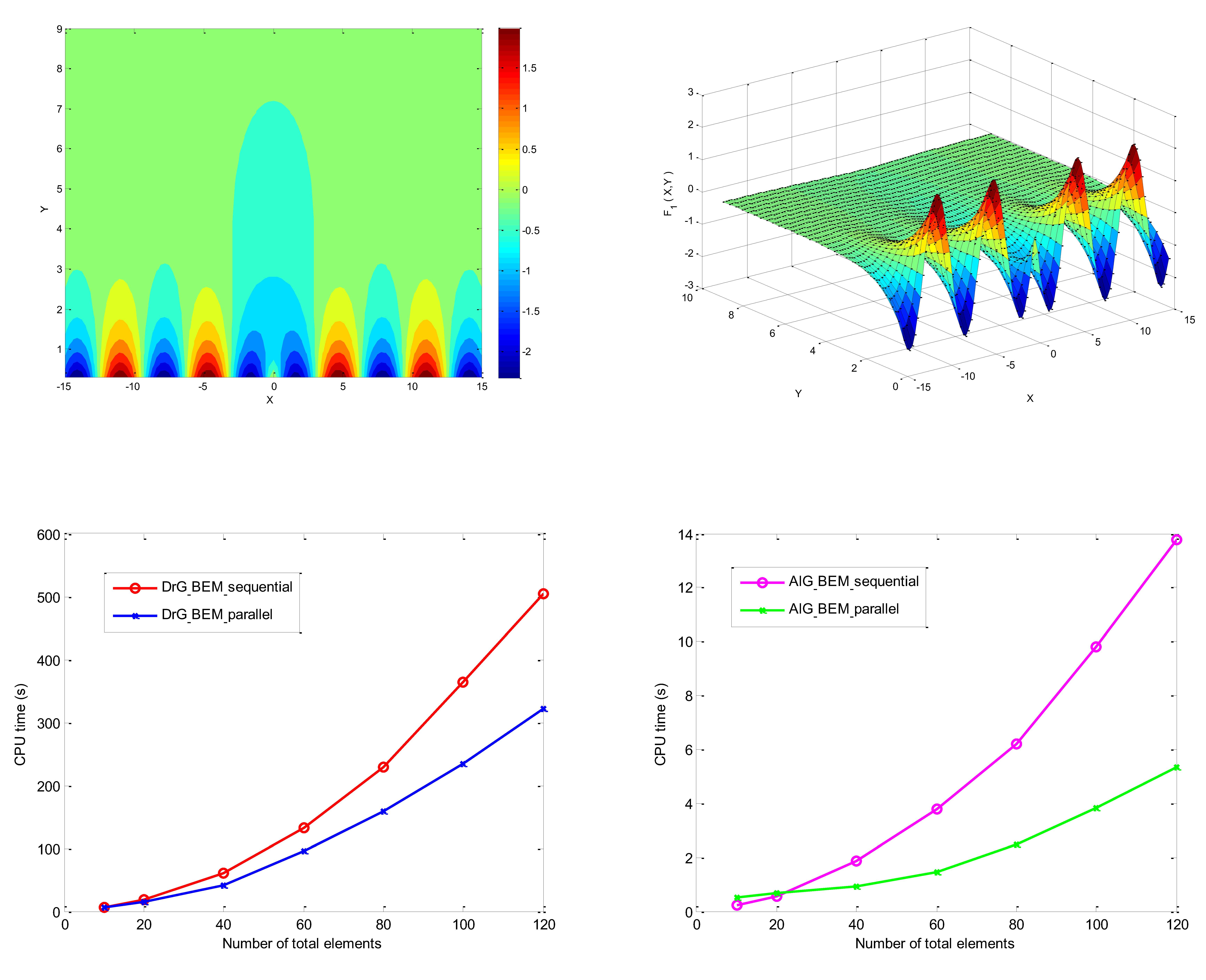The present study aims to develop an efficient numerical method for computing the diffraction and radiation of water waves with horizontal long cylindrical structures, such as floating breakwaters. A higher-order scheme is used to discretize geometry of the structure as well as the relevant physical quantities. As the kernel of this method, Wehausen’s free-surface Green function is calculated by a newly-developed Gauss-Kronrod adaptive quadrature algorithm after elimination of its Cauchy-type singularities. To improve computational efficiency, a Chebyshev approximation approach is applied to a fast calculation of the Green function that needs evaluation thousands of times. In addition, OpenMP parallel technique is used to the formation of influence coefficient matrix, which significantly reduces CPU time. Finally, computations are performed on wave exciting forces and hydrodynamic coefficients for the long cylindrical structures, either floating or submerged. Comparison with other numerical and analytical methods demonstrates good performance of the present method.

